
MODULE 11 - COMMON CHALLENGES
CHAPTER 1: ELK HUNTING FRUSTRATIONS

This chapter has the ability to get long. Really long. Elk hunting can be frustrating. In fact, it can be one of the most frustrating things you might ever experience outside of raising a teenager… 🙂 Those frustrations seem to magnify the further you get into a hunt, as the possibility of failure looms closer with each passing day. It’s important to recognize that there will be frustrations and challenges as part of the overall experience. However, those challenges don’t have to be what define the hunt or ultimately decide the outcome of the hunt. The challenges, if dealt with properly, can become inspirations to push you harder. Then, when success comes, those challenges will be the very thing that makes the victory so sweet.
If elk hunting was easy, or if it became easy after a few years, success rates wouldn’t be in the single digits and low teens. I have hunted elk now for over 30 years. I still deal with challenges every day I hunt. The key to elk hunting success is learning from failures, and learning to minimize and overcome the inevitable challenges that are an inherent part of elk hunting.
HUNTING PRESSURE
Perhaps the most common challenge experienced in public land, over-the-counter, self-guided elk hunts, is hunting pressure from other hunters. I would personally rather hunt an area that only holds 10 elk with no other hunters, than hunt an area that holds 1000 elk with 10 other hunters. Other hunters are just as entitled to be in an area as I am, but I don’t like trying to compete with them for the elk.
I recently watched the movie, Everest, and one of the characters in the movie, Anatoli Boukreev, said: “We don’t need competition between people. There is competition between every person on this mountain. The last word always belongs to the mountain.” I feel the same way when it comes to elk hunting. We don’t need competition with other hunters. There is enough competition for us from the elk and the mountains. If we end up focusing our efforts on competing with other hunters, the elk and the mountain will have the last word.
So, how do we overcome hunting pressure? Some of this goes all the way back to the first Module on Planning Your Hunt. If possible, it’s important to understand the kind of pressure a specific area gets before you commit to going there. But that doesn’t always work out. Other hunters can get displaced at the last minute and end up in the same area you’ve scouted. I’ve personally hunted an area for several years without any measurable pressure from other hunters, only to find that when I switched to a different week in the same area, the pressure was insane.
GET AWAY FROM THE CROWDS
For me, I’ve found that the best way to overcome this challenge is to get away from the roads. I know everyone says this, but it’s really true. Going back to Module 2 on Scouting For Your Hunt, I look for areas that have the three things an elk needs (food, water, bedding) and then I add in the final attribute of being at least a mile from a road.
In the past 5 years or so, there have been more and more elk hunters who have discovered the solitude of the backcountry, and it’s become more common to bump into other hunters several miles off the road. However, the backcountry is big, and the odds of finding two-legged competition once you cross the one-mile threshold diminishes dramatically.
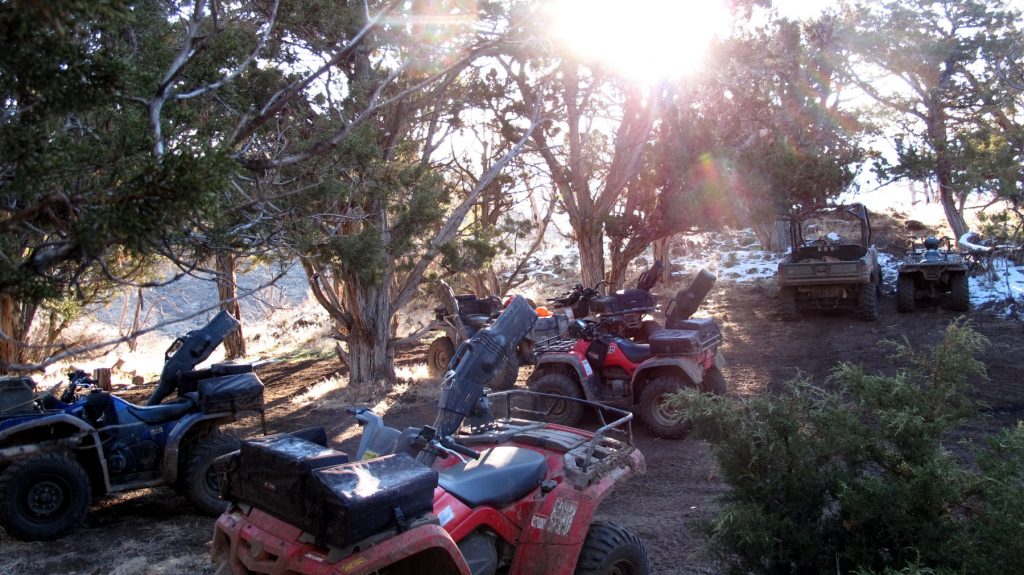
Be at the trailhead early, be on the mountain well before daylight, and hike hard. This will separate you from 90% of the hunters, and generally provide you with a hunt uninterrupted by competition.
USE PRESSURE TO YOUR ADVANTAGE
If you end up hunting in areas where there is unescapable pressure, you can actually use it to your advantage. Elk don’t like to be pressured, so look for those hidden areas where the elk will be most likely to retreat to when they get pressured. Study Google Earth and topo maps to find hidden drainages or steep, thick canyons where most hunters won’t go. Then, go there.
For rifle hunters, pressure can be especially advantageous. Just be sure you are in front of the pressure, and let them push the elk toward you. A natural funnel or escape route can be a great place to be sitting at daylight as the “sea of orange” makes its way up the mountain. Or, find those areas where the elk will concentrate when they get too much pressure. The reason they end up where they do is because there isn’t as much pressure there. And the reason there isn’t as much pressure there is because it is not easy to get to.
Ultimately, if you are running into other hunters despite your best efforts to escape them, relocate. Unless you are willing to allow another hunter to determine the outcome of your hunt, get away from them one way or another. Do not let hunting pressure become your crutch for not being successful. Yes, it can be a frustrating challenge, but it does not have to be the cause of your failure unless you let it be. You might not be able to control where or how other hunters hunt, but you can control where and how you hunt. So, take control.
PREDATORS
In addition to the competition of two-legged predators, four-legged predators are another factor that can have a major effect on the outcome of your elk hunt. I feel predators are a natural part of the overall balance of elk herds, but I’ve seen first-hand how an out-of-balance predator population can wreak havoc on elk herds and elk behavior. Elk that live in areas with predators act differently than elk in areas where predators aren’t a concern. They are more wary as they come in to a setup, and they are often less vocal. I won’t go as far as to say you should completely avoid areas where there are lots of predators, but it is a concern worth noting and planning for.
There are five predators that I feel can affect an elk hunt: wolves, grizzly bears, black bears, mountain lions, and coyotes.
WOLVES
I won’t get into the political debate about wolves in this discussion. There is definitely a political aspect to the issue, but for this conversation, I’ll keep my comments focused on the effect wolves have on hunting elk, and how to overcome it. In a nutshell, wolves are elk-killing machines. Even a large, healthy, mature bull elk doesn’t stand a chance against a pack of wolves. Whether wolves affect the overall population of elk or not, they definitely effect the behavior of elk.
The introduction of wolves into several Rocky Mountain states over the past several years has impacted hunting, no doubt. But it has not made it impossible, and there are still areas – even within units that hold solid numbers of wolves – where elk hunting is great.
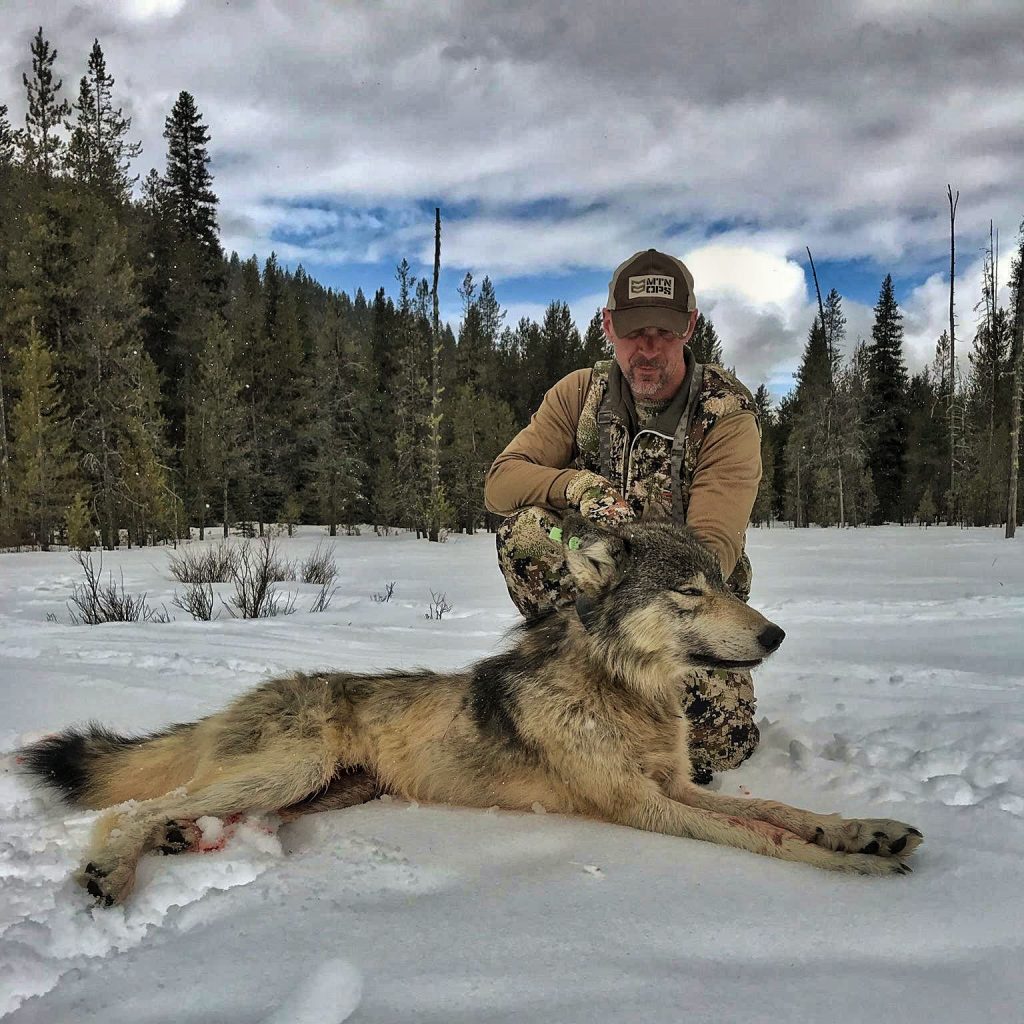
Wolves are continually on the move, and continually on the hunt, which means the elk have become increasingly wary of danger. Their senses have to be on full-time survival mode, which makes it harder for elk hunters to get in close. Additionally, elk are no longer able to just hang out in one place during the rut, and will often get pushed from drainage to drainage as they try to escape the nomadic wolf packs.
Lastly, elk are often less vocal in these “wolfy” areas. A talkative cow elk, or a bugle-happy bull, becomes an audible dinner bell for nearby wolves. Elk have caught on to the fact that when they announce their location to other elk, they are also announcing it to the wolves.
So, what can be done to overcome this challenge? Wolves are most likely here to stay, and with their prolific breeding and unmatched intelligence, it’s going to be tough to do more than just maintain their populations. With Federal protections, eliminating them from the landscape isn’t a very likely option, either.
I grew up hunting in Idaho, and Idaho is still my home state today. The areas I prefer to hunt are right in the middle of wolf-central. I personally saw wolves while I was elk hunting beginning in 1999, and have encountered them several times since. Since their reintroduction, wolves have spread to multiple states, and there are measurable populations of them in Idaho, Montana, Wyoming, and Oregon. They have also appeared in Colorado, Utah, and Washington. If they are managed correctly, their impact on elk and elk hunting won’t be as drastic. But a high population of wolves definitely changes the way we have to elk hunt.
If at all possible, research where the highest concentrations of wolves are. Idaho, Montana, and Wyoming keep pretty good tabs on the wolves, and a general map showing the range of each known wolf pack is available in those states (see below). If you end up in an area that is being frequented by wolves, it might mean that your previous scouting is no longer valid or accurate. As wolves push elk around within the units, you may not find elk in the areas you have found them in the past, or where your scouting led you to believe you would find them. Lastly, you probably aren’t going to get as many responses to your bugles, especially from long distances. Bugling seems to happen in closer quarters, if you can get the elk to bugle at all.
A few years ago, we had several elk on pre-season trail cameras. On the first morning, we spotted several bulls in the canyon we were planning to hunt. However, our desperate bugles and cow calls didn’t elicit a single response from any of the elk. Finally, after moving inside 150 yards of a large herd bull, he finally let out a soft, low, short growl. Then, he rounded up his cows and moved out of the area. My bugles were sounding the dinner bell for the wolves, and the elk were understandably anxious about hanging around. After finding a lot of fresh wolf sign, we decided that we also needed to relocate. We moved camp 10 miles down the drainage, and instantly found a pocket of very vocal elk activity.
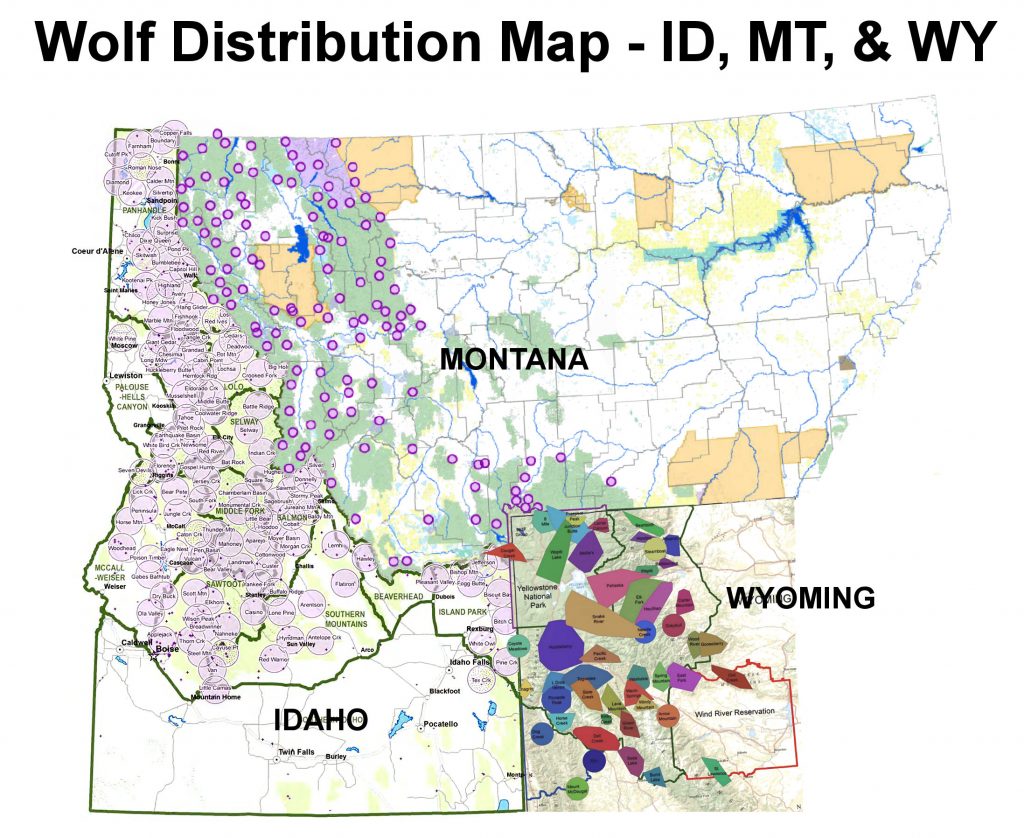
GRIZZLY BEARS
Grizzly Bears are also prolific hunters. Similar to wolves, an area high in grizzly population can make the elk more wary and less vocal. Additionally, of all the predators, grizzlies are the ones a hunter needs to be most concerned about when it comes to their safety. I won’t go into the safety precautions that need to be taken when elk hunting in grizzly country, but there are a few things to consider that could affect your tactics. Being prepared for camping in grizzly country is important, as is being prepared to process and pack an elk out of grizzly country. Again, for this conversation, I’ll keep my comments limited to how grizzlies can affect elk hunting tactics, and what you might need to do to overcome the associated challenges.
Similar to hunting in wolf country, elk in grizzly country can be a little less vocal than they might otherwise be in areas where grizzlies don’t exist. Grizzlies are big, powerful predators, and can easily take down full-sized elk. When an elk bugles, it knows it is alerting the predators.
In addition to often being less vocal, elk tend to move around more and travel farther. It is not uncommon for elk in grizzly country to feed and water greater distances from their bedding areas. Hanging out in one small area would make them an easier target for the bears, so they will often travel farther in the mornings and evenings.
Calling can still be effective, but I definitely limit my calling when I’m hunting in grizzly country. And I don’t usually sit in one area and call for too long. If I sit around blowing my elk calls repeatedly, I also become a target for a grizzly, so I definitely tend to call less than I normally would. Once I get an elk to answer, I’ve found they will be more likely to “bugle and run” as well, so it can become a game of cat and mouse. However, once I get in close, it’s game on again, and the elk seem to respond well to the calls.
Again, I am usually more concerned about my own safety when I hunt in grizzly country, and less concerned about how grizzlies affect my elk hunting tactics. However, they can have an effect on how the elk behave, and it’s often necessary to adjust tactics based on that behavior.
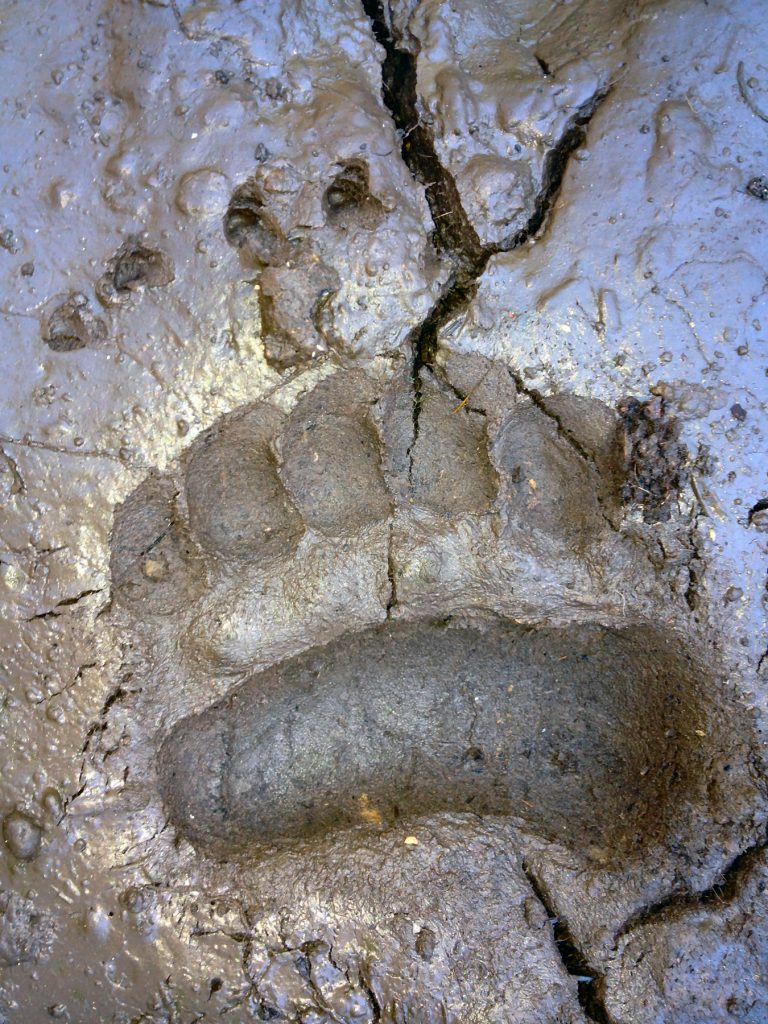
BLACK BEAR, MOUNTAIN LIONS, AND COYOTES
I think it’s safe to lump these three predators into one section. They all hunt in completely different ways, but their effects on elk populations are not too drastic, especially if they are kept in check. A high population of bears or mountain lions might cause the elk to be a little more skittish, but it usually doesn’t affect the calling as much as grizzlies or wolves. If anything, the elk might be a little more cautious as they come to the calls, but I haven’t noticed much of an effect on their overall behavior.
Black bears and coyotes can have a pretty profound effect on calf survival in the spring, and elk populations can be stifled when there is an overpopulation of either, especially bears. Overall though, I don’t worry too much about hunting areas where there are black bears, mountain lions, or coyotes.
THE WEATHER
Another way nature can wreak havoc on an elk hunt is through the weather. Weather during September and October seems to be at a transitional point, so there is a lot of instability and unpredictability. This can have an effect on elk behavior, and although there isn’t a thing you can do to change or control the weather, knowing how elk react to certain weather patterns can be helpful.
HEAT
The most common weather system archery elk hunters often have to deal with is heat. The hot, dry days of an Indian Summer can definitely stifle the intensity of the rut. Cows head to the bedding areas earlier in the morning to avoid the heat, and they spend more time in the cool retreats during the day. They also leave later in the evening to head back to their feeding areas. This creates a narrower window of opportunity for hunters.
When it comes to a hot, dry climate, the one thing I’ve found that seems to have the most effect on the elk rut is not actually the heat, but the availability of water. A lack of moisture throughout the formative months of antler growth (May – August) is often blamed – and rightly so – for smaller antlers. This is especially noticeable in drought areas where elk are dependent upon spring and summer rain storms to provide critical green grasses for feed. However, even more important than the drought’s effect on antler growth is its effect on rut activity.
During seasons of extreme drought, elk behavior can be altered drastically. Not only are elk movements completely altered, but the bugling action is often quite limited, and the intensity of the bugling/rutting action can be greatly decreased. In situations like this, it is still possible to have a great hunt, but the main thing you need to find is a reliable source of water. The elk will likely be concentrated around this area, and a concentration of elk during September can definitely improve the rut. On hot, dry years, find the water – find the elk.
RAIN
Speaking of water, heavy spring and summer rains can actually create problems as well. In states such as Arizona, New Mexico, Nevada, etc., where the effects of drought are dealt with most frequently, rain is a good thing. But in the mountain states like Colorado, Montana, and Idaho, too much rain can cause the elk to be spread out and not concentrated. This might lead to more, smaller herds, many of which might end up being tended to by younger bulls who will try like crazy to keep their harems away from other bulls to prevent losing their cows.
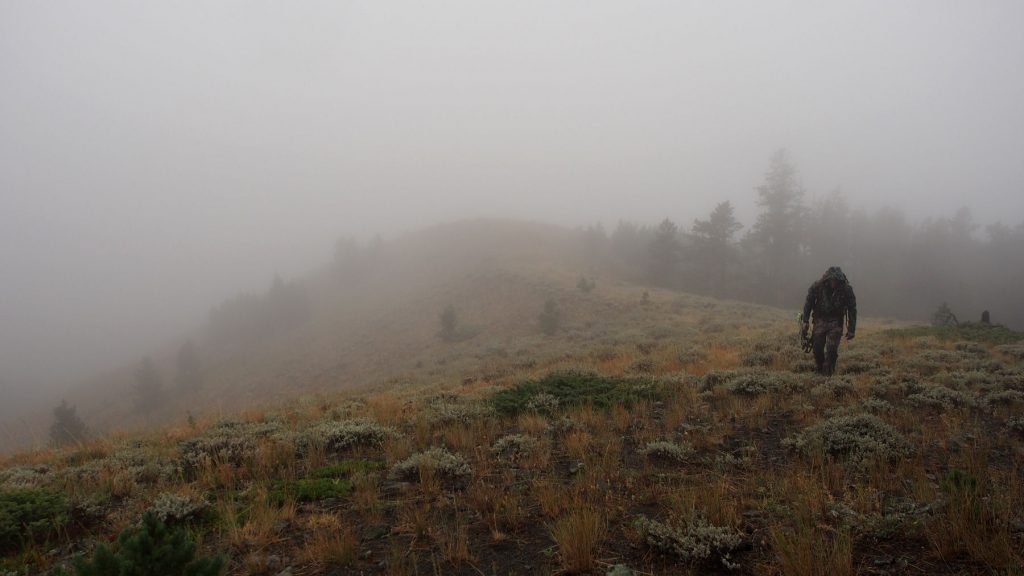
In addition to annual moisture affecting the behavior of the elk, it’s important to consider how excessive rain during your hunt can affect the elk, as well as your ability to access the elk. Elk don’t like to be wet any more than we do, so it’s not uncommon for elk to hunker down and be fairly quiet and immobile during heavy rains.
You certainly don’t have any control on the weather, but knowing that elk are going to be brushed up in their bedding areas and possibly not travelling as much during the rain can help determine where you need to go to find them. Also, keep in mind that roads you were able to drive 45 MPH on just minutes earlier, can become skating rinks and mud bogs in an instant.
PREVIOUS WINTERS
Another important factor to consider when it comes to the weather is the severity of the previous winter, and the associated snow packs that linger into the spring. A hard winter, particularly in a mountain state, can be rough on elk herds, especially if the winter hits late and extends longer into the spring. Often times, elk are relying on their fat reserves to help them survive until nutritious, green grasses start sprouting up in the spring. During a late winter, freezing temperatures can delay the green grass, and cause elk to starve to death due to a lack of viable feed. The effects of hunting an elk herd that has been hit hard by winter-kill can be quite noticeable.
What I have found to be most noticeable about hunting an elk herd after a hard, late winter though, is their location during the following fall. During the spring, the bulls move up higher on the mountain to spend the summer. The cows will also move up the mountain a ways, to the areas where they will have their calves. They will end up spending the rest of the summer in these “calving” areas where there is ample feed and protection for their growing calves. These areas are where the bulls eventually come to find the cows and establish their harems during the pre-rut.
On a year where there has been a lot of late snow, the cows will often end up calving at lower elevations, which means the rut will often occur at these lower elevations in September.
A few years ago, after a particularly rough winter in Idaho, I returned to an elk area I had hunted for several years. It was one of my old standbys, and I didn’t have a need to do much scouting. However, I did place four trail cameras in different areas, and checked them the week before season opened.
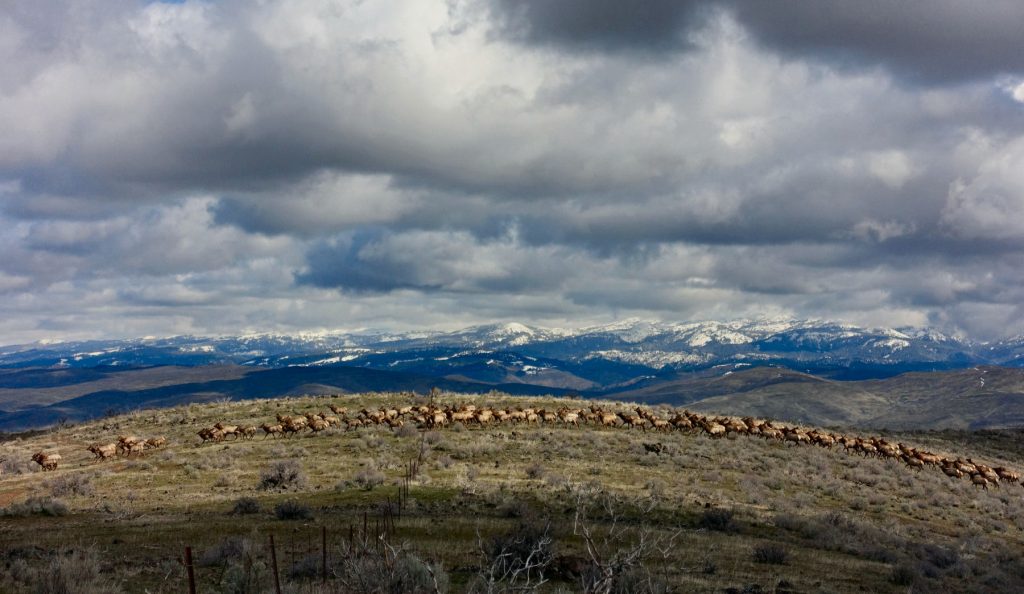
To my surprise, I had less than 20 elk total on all four cameras. The previous summer, I had over 100 elk on one of the cameras in the same location. I’m not sure if it was stubbornness or hopefulness that caused me to stay in that area when season opened, but either way, it didn’t change the fact that the elk just weren’t there. After five days of looking in every hidey hole I could think of, we finally relocated.
Fortunately, we found several elk about 20 miles down drainage, and managed to fill our tags on the last two days we had to hunt. It turned out well, but it also reinforced the fact that you have to find the elk before you can hunt them. And, weather from 9-10 months before the elk season can have an effect on where you find them.
For the most part, elk will rut in the same general areas year after year. However, it’s important to consider the previous winter, as well as the current moisture situation, as you begin to fine-tune where you are going to hunt each season.
MOON PHASES
Another natural cycle that often stumps elk hunters is the moon phase. As summer fades, the days grow shorter and tension builds among bulls. They split off from their summertime bachelor groups, and begin staging for the upcoming rut. During this transition, elk begin to seek the security of cover for longer periods of time. As the moon grows from a new moon to a full moon, elk spend even less time out and about during daytime hours. With the added pressure of hunters now taking to the woods and the bright full moon, elk become more nocturnal and use the moon’s illumination to feed and rut at night, and seek refuge in thick cover to rest during the day.
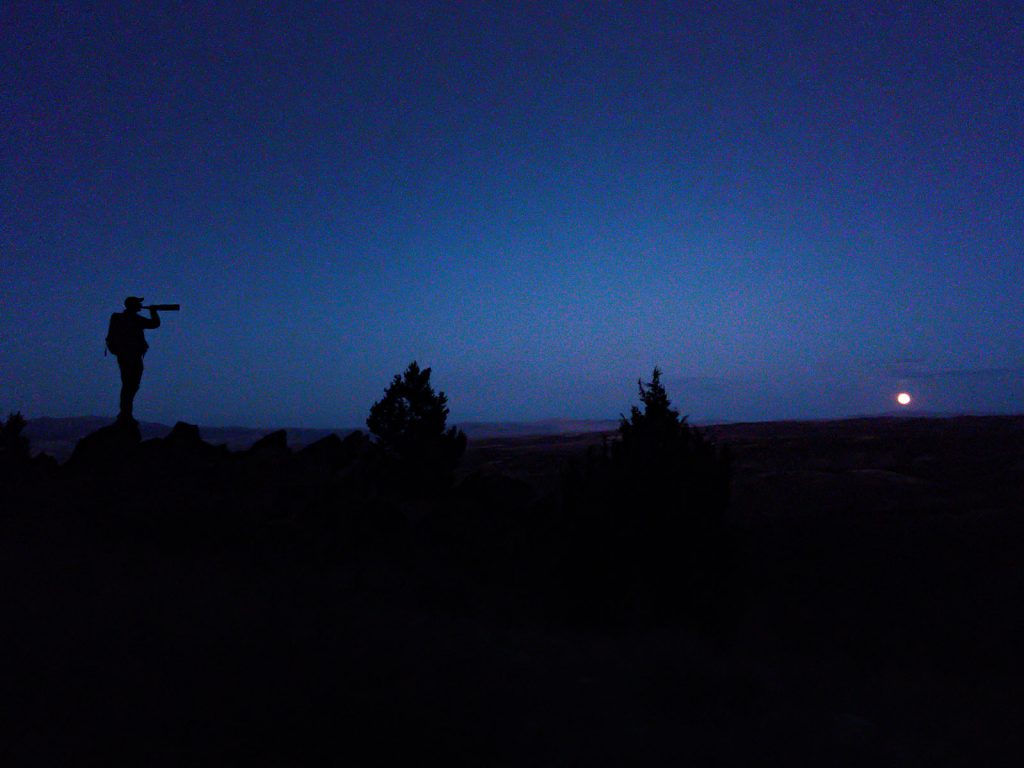
The combination of heat AND a full moon can spell disaster for conventional dawn and dusk elk hunting tactics. The window of opportunity during this time can be very small. Even when you have a solid idea of where the elk will be found at first light and are able to position yourself as close as possible to get set up, it can be very frustrating to find the elk already on the move and headed back to their bedding grounds.
Go back and re-read the section on hunting the middle of the day (Stay on the Mountain) in the Miscellaneous Elk Hunting Strategies Module. Hunting during the middle of the day can be especially effective during a full moon.
Oftentimes, during the middle of the day, herd bulls will get up to stretch their legs, check their cows, or visit a nearby wallow. This is the perfect opportunity to slip in close to the elk’s bedding area. Even on the hottest of days, and despite a full moon, midday hunting is often the key to turning a slow hunt into an action filled rut-fest.
Cloud cover from unpredictable mountain storms can drastically decrease the moonlight during the night, which can also help increase elk activity during the day, even during the dreaded full moon. Rain from these storms can instantly change the attitude of previously quiet bulls, so be sure to take full advantage of the cooler, quieter woods, even during a full moon.
WHAT MOON PHASE IS BEST FOR ELK HUNTING?
To determine the best week to hunt elk each fall, there are two primary indicators I always look at before I start making a plan for which week – or weeks – I want to hunt. And those factors are the Fall Equinox and the 2022 Moon Phase Calendar.
As elk hunters, we don’t always have the luxury of hunting during the “prime” week each fall. We are often forced to adapt to whatever moon phase – and several other uncontrollable conditions – happen to exist on the days we are able to hunt. However, if you are able to pick the “best” week to hunt elk, it’s important to understand how the moon might play a part in your success.
Backing up just slightly, I want to mention one important factor to consider, especially if you are trying to plan around the timing of the rut. The amount of light entering a cow elk’s pupil is what naturally triggers the estrus cycle, or the “rut”. Of course, not all cows come into heat at the same time. The older cows usually start first, with the younger cows coming into estrus later. However, cows are generally triggered to come into estrus (and cause the peak rut period) within 5-10 days of the Fall Equinox.
The Fall Equinox is the day when the daylight hours and the hours of darkness are of equal duration. For 2022, the Fall Equinox occurs on Thursday, September 22nd. So, if you’re looking for the peak rutting “action”, the 17th-27th of September should get you pretty close.
Personally, I prefer to hunt just slightly before the peak of the rut. The days leading up to the “peak rut” typically find the bulls establishing harems, and more aggressively fighting to establish their dominance. Once the peak rut kicks in and the bulls begin focusing more on breeding, calling herd bulls away from their cows can become a little more difficult.
To find the perfect dates to hunt though, I also need to consider what the moon is going to be doing during this timeframe as well.
2022 MOON PHASES
In 2022, there will be full moons on August 12, September 10, October 9, and November 8.
Looking at September, you’ll find that the moon will be mostly bright during the first two-and-a-half weeks of the month, then getting darker until it reaches New Moon (no moon) on the 25th.
The moon phase in 2021 was pretty rough, and a full moon coincided with the Fall Equinox. For 2022, however, it should be REALLY good!
September 2021 was pretty sporadic from a rut/calling standpoint. I spent the first portion of the month in Alaska, and since we wouldn’t have seen the moon if it had been full (due to excessive cloud cover), my experiences there aren’t worth correlating to the moon’s effect on elk hunting.
However, upon returning home to Idaho, I was able to spend a few days hunting with my children before heading to another part of the state to hunt with Donnie and John later on in the month.
I hunted with my son Sam on September 10th and 11th, and the bugling action was OK on the 10th. The weather was a bit crazy though and a big storm blew in that afternoon, which could have been why the elk were acting a little strange.
The next morning though, the elk action was really, really good! Sam ended up shooting a really big 6×6 bull – his first elk with a bow – on the afternoon of the 11th. His bull was already herded up with several cows, but the cows weren’t ready to breed and the bull was more than willing to come in to fight. He came screaming in to our setup, and Sam made a 30 yard shot.
The next week, Donnie, John and I left for our hunt here in Idaho. In my breakdown of the elk hunting weeks for 2021, I mentioned this timeframe would likely produce some tough hunting, and it turned out to be pretty accurate.
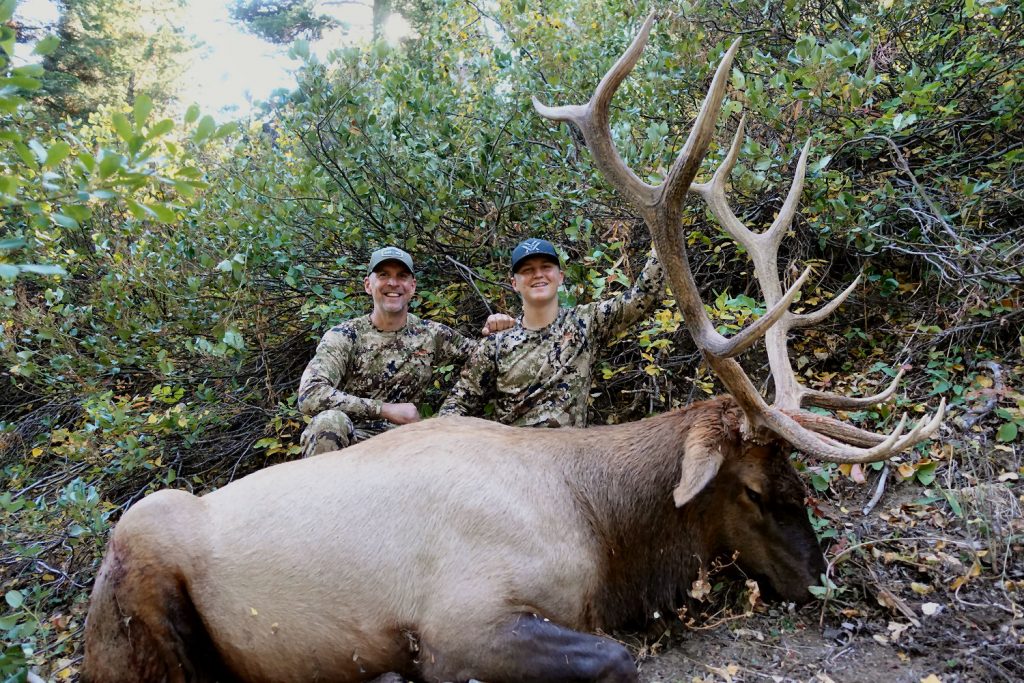
The full moon hit right in the middle of our hunt, and the moon was really bright the entire time. We did call in a small bull on our first day of hunting (the 17th), and Donnie was able to fill his tag that afternoon, but things were pretty slow after that. We did have a good afternoon of action on the 19th, just as a big snowstorm was coming in, and there was decent calling the next morning, but the herd bulls were glued on their cows and not interested in coming in to calls.
We changed tactics and followed a herd bull to his bedding area, where he spent the entire day harassing a cow. We actually saw the bull mount the cow a couple of times – indicating the cows were coming into estrous – and he was going hoarse from his non-stop bugling before John was able to slip in and shoot the giant 6×6 bull.
The next 2 days (21st and 22nd) were really slow, but we found a big herd on the 23rd and had good calling action, but no actual call-ins. It seemed the bulls were definitely more interested in their cows and not as interested in checking out our calling – both bugles and cow calls. The 24th died off and our hunt was over.
I did make it back for the last day and a half of the season (29th – 30th), but I only heard a couple bugles. I did manage to catch a glimpse of a big herd bull following his cows to water on the evening of the 29th, and after not hearing a single bugle all day on the 30th, I decided to go and set up along the path where I had seen the bull the night before.
Luck was on my side, as 20 minutes before the end of legal shooting light on the last day of the season, that same bull ended up 12 yards away from my ambush location and I was able to shoot my biggest Idaho bull to date – but the calling was non-existent and this herd bull was silently locked in on his 3 cows.
So, 2021 wasn’t too far off from what I predicted it would be….a rough September from an overall calling standpoint. But, 2022 should be much better!
Here is how I would break down the moon’s effect on elk hunting for 2022:
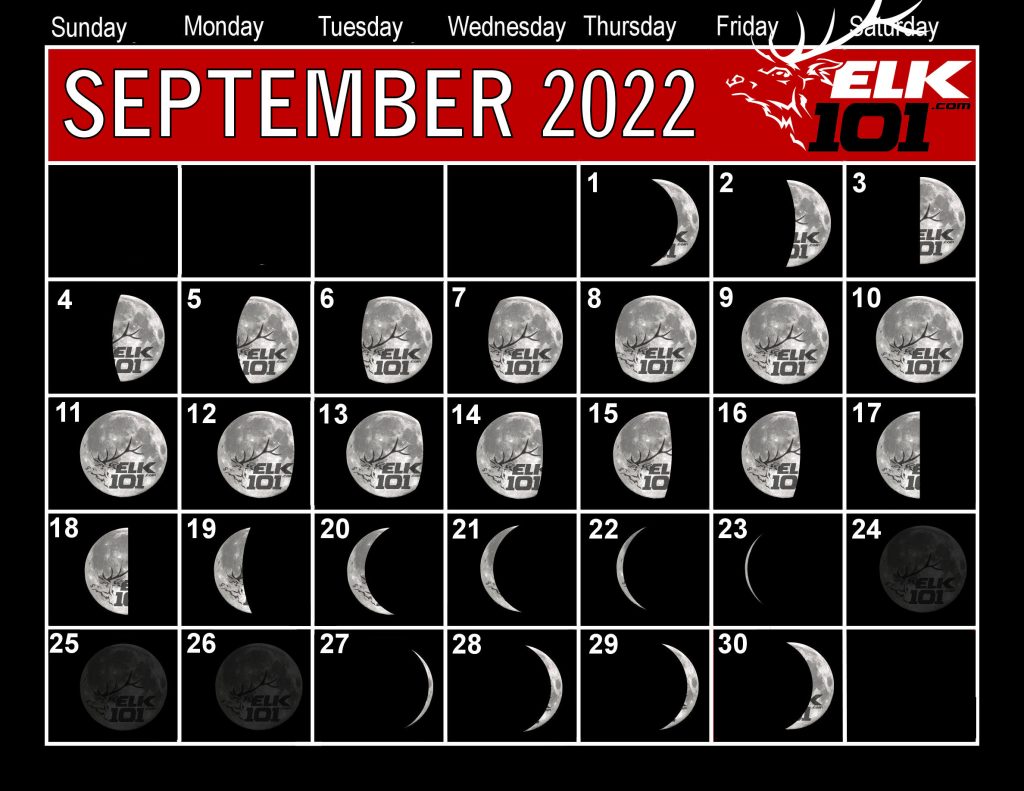
I’ll lump the first 10 days of September into the same group, as those dates are going to be early, pre-rut dates coupled with a lot of moon light. On most years, I would say that those dates could be OK, especially for targeting larger bulls before they get with the herds. But in 2022, it’s going to be tough hunting, and calling is likely to be pretty limited outside first thing in the mornings and at last light in the evenings. Midday hunting during this early part of the season could be decent, but it will likely be hit and miss as well.
From the 11th – 17th, the moon will be waning and hit Last Moon on the 17th, which is the halfway point between the full moon and the new moon. For the most part, this week will still have quite a bit of moon light and should coincide with bulls wandering to find cows and fighting to establish dominance.
Again, this is usually a great time to hunt, but with all the moonlight this week, a lot of that activity is going to happen at night, especially during the first part of the week. Action will be picking up each day, and while this week could end up being pretty decent, it wouldn’t be my first choice for a week to hunt.
However, the week that includes the 18th – 24th should be just about perfect! The Fall Equinox hits right in the middle of this week, and the moon is pretty much dark all week. The only issue we may run into this week will be cows coming into estrous and bulls being locked into their harems and not responding aggressively (i.e., coming in to) to calling. But, this would probably be the week I would choose if I had to choose just one week.
By the last week of September, we will still be enjoying a dark moon phase, but most of the cows should be coming into estrous by this time, and the herd bulls will be hyper-focused on their harems and even less likely to come in to calls. This will still be a really good week to hunt, and you should hear a lot of great calling, but if you are wanting to set up and call bulls in to your calls, this probably won’t be the best week.
For desert states (Arizona, New Mexico, Nevada, Utah) that have seasons that coincide with the 2nd half of September, this would probably be a great year to draw! For mountain states (Colorado, Wyoming, Montana, Idaho, etc.), the 18th – 24th would be a good bet. I wouldn’t completely overlook the 11th – 17th, but there will be a lot of moon that week, and if could affect the hunting a bit.
OCTOBER HUNTING
Rifle seasons in many states open during mid-October, so it’s important to recognize what effect the moon might have on elk behavior during this time as well, especially once the rut is over. For 2022, October looks very similar to September from a moon phase perspective. The moon will be hitting full brilliance on the 9th, and then waning through the end of the month.
There could be some good bugling action – again, mostly at first and last light – during the first 10 days of October, but the elk activity is likely to occur mainly at night. The week of October 16th -22nd should be better as the moon will be going mostly dark, forcing the elk to spend a little more time feeding during daylight hours.
The same will hold true for the following week as well, but most states will have had rifle seasons open for a week or more by that time, so the increased hunting pressure will likely push the elk to harder to hunt sanctuaries or more nocturnal activity.
Keep in mind that October 15th lands on a Saturday this year, so for the states that have an October 15th opening, opening weekend will likely be very crowded. I wouldn’t necessarily skip out on opening day this year, but realize it will likely take a couple days into the next week before the elk recover from the barrage of pressure that is sure to hit over the weekend.
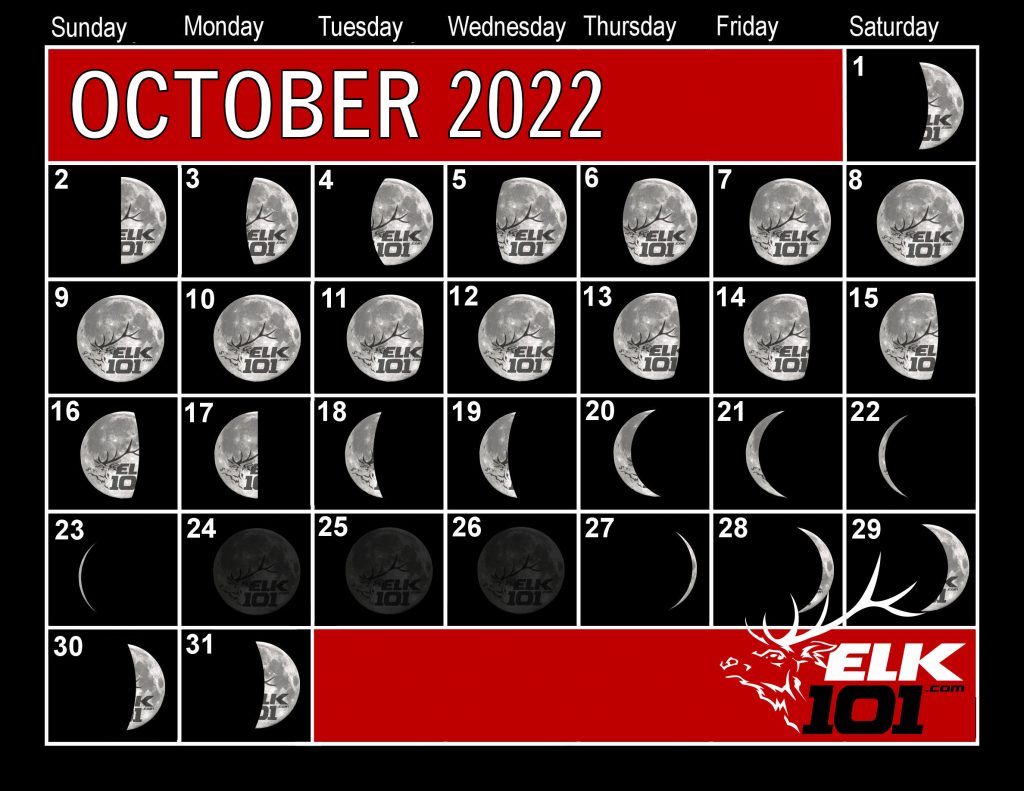
By the time the elk start transitioning from post-rut to late-season behavior in November, the moon will be getting bright again, which will allow the elk to feed more at night and escape some of the hunting pressure during the day, making it tough to find elk during those first 2 weeks of November. If you’re lucky enough to hunt after the 12th or so, however, you should see elk out feeding more during daylight hours, and you should be seeing bulls coming out from their post-rut sanctuaries and starting to get back together with other bulls and spend a lot more time out in the open looking for food.
As with any post-rut and late-season elk hunting, targeting primary feed sources that the elk will be concentrating on will be the key.
SUMMARY
From my experience, elk are elk, and they are going to rut regardless of the moon phase. However, on really good year where the new moon and the Fall Equinox align – like 2022 – it’s OK to get a little more excited, and expect to have some really good elk rutting action during the month of September.
Understanding the effects of the moon phase on the elk rut is important, and can help you plan not only when to hunt elk, but also help you understand how to hunt them as well.
FOREST FIRES
The last nature-related challenge I’ll mention is one we deal with on a regular basis here in the west – wild fires. Wild fires during the hot, dry months of July, August, and into September can cause a lot of problems for elk hunters. Even if the fire isn’t in the exact area you plan to hunt, road closures and/or area closures can keep you from accessing many surrounding areas. Even if you can access your area after the fire, the elk may or may not still be in there.
If a fire burns really hot and decimates the feed and cover the elk rely on, there is a good chance you won’t find elk there, sometimes for several years after a fire. However, when a fire burns spottily through an area and leaves patches of timber where elk can still find cover, those areas can be great locations to find elk, sometimes just days after the fire. With nutrients and minerals still found in the soil, tender shoots of green grass will often begin sprouting up immediately following the fire. With fresh feed and ample cover, fresh burns can be great locations to find elk.
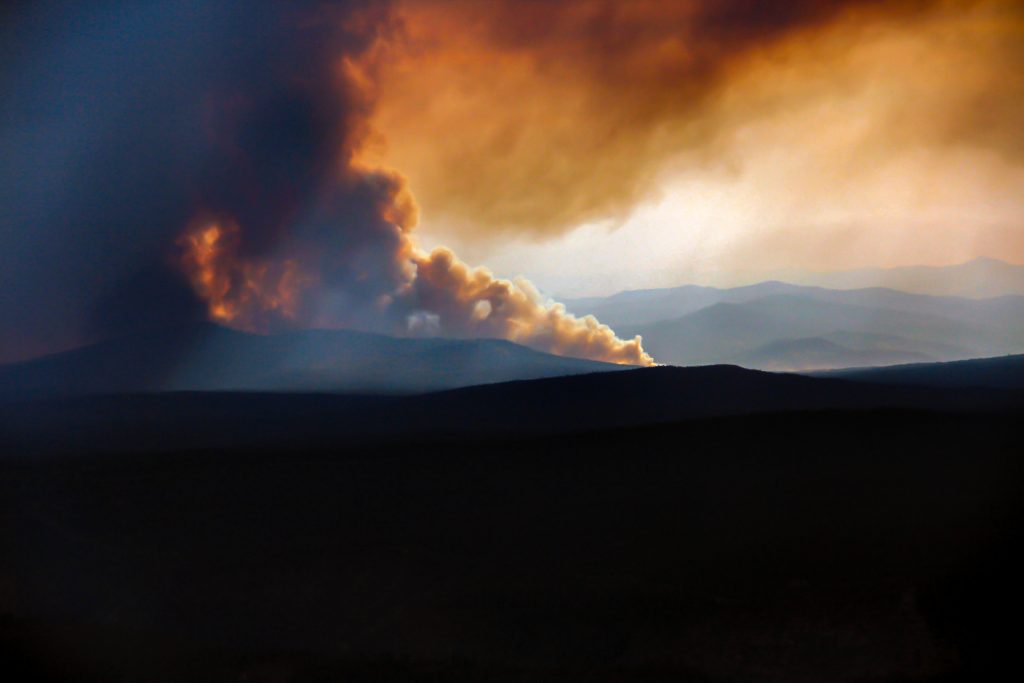
There are a couple of great resources for keeping track of your hunting area throughout the summer, and monitoring the fire activities in multiple states.
For current forest fire activity: http://inciweb.nwcg.gov/ or https://fsapps.nwcg.gov/afm/ .
A GREAT resource for monitoring current fires, as well as seeing the perimeters and burned areas from previous fires is available through the NIFC (National Interagency Fire Center): NIFC Fire Perimeter Data
BACKUP AREAS
As I mentioned in the beginning of this Chapter, elk hunting can be frustrating. There are so many things within our control that can and do go wrong. When we add in all the things that are seemingly out of our control, it can get somewhat overwhelming trying to deal with these challenges. One of the most important things I have learned from all my years of failures is to have several back-up areas. And don’t wait 6-7 days to leave your primary area if you aren’t able to hunt it effectively. I have found that being mobile allows for a quick relocation if I’m not finding huntable elk in a certain area.
I use Google Earth to research potential hunting areas, and I identify 8-10 areas that look promising. These areas are all identified, ranked in order of potential, and transferred to my GPS. If I don’t find elk in one area, I move on to the next one, and keep moving until I find elk. Having multiple back-up areas is critical, especially when we consider how many factors there are that can change – or completely close – an elk hunting area overnight.
Outside of these “natural” challenges that can have an effect on elk hunting, there are several challenges presented by the elk themselves that can make elk hunting frustrating.
To read about some of these elk challenges, Click ‘Next Chapter’ Below.





